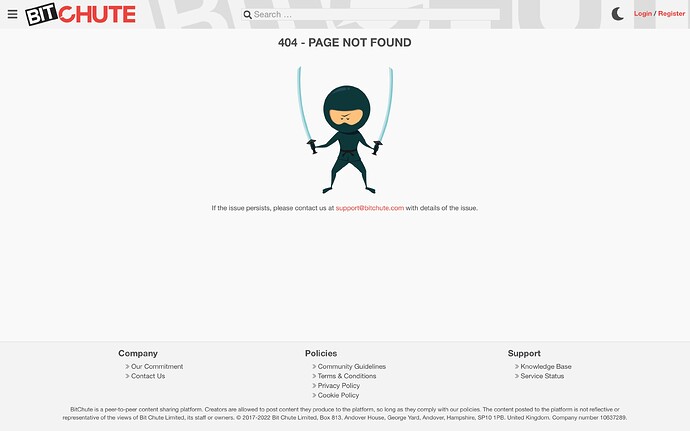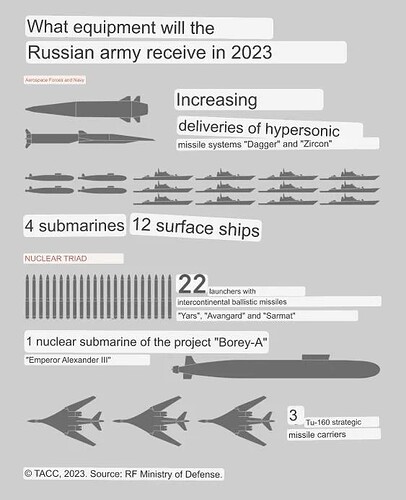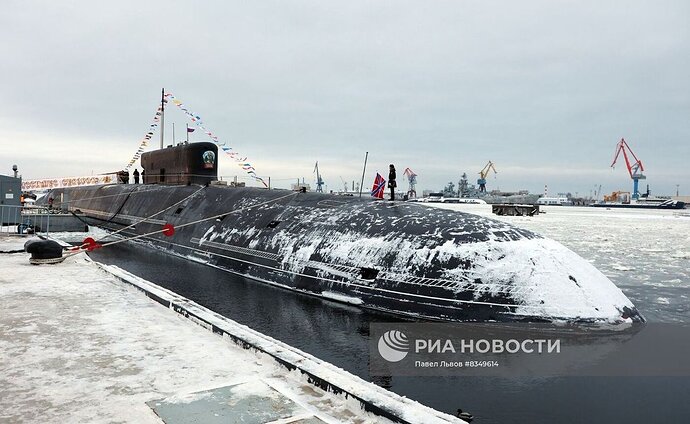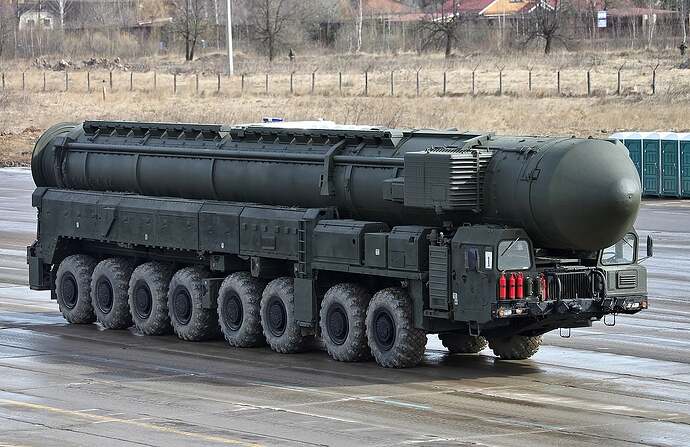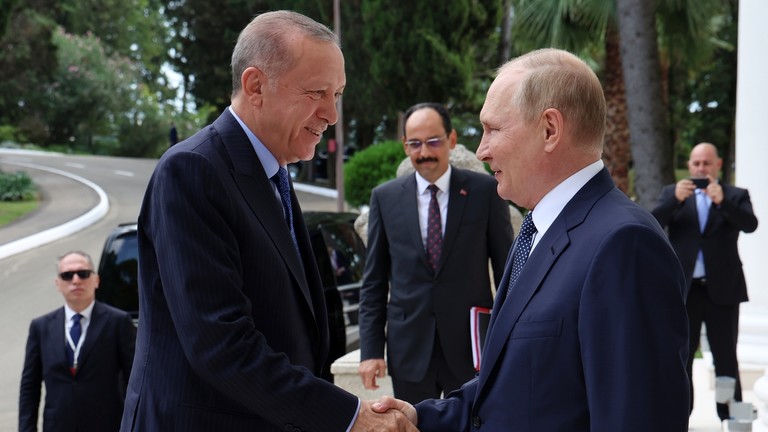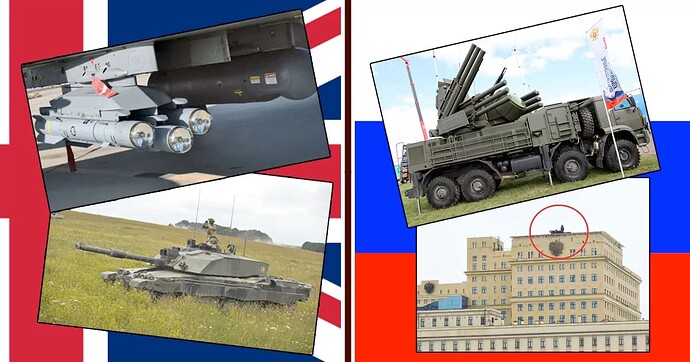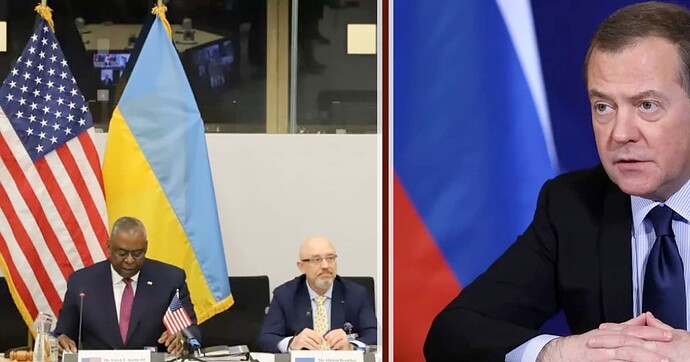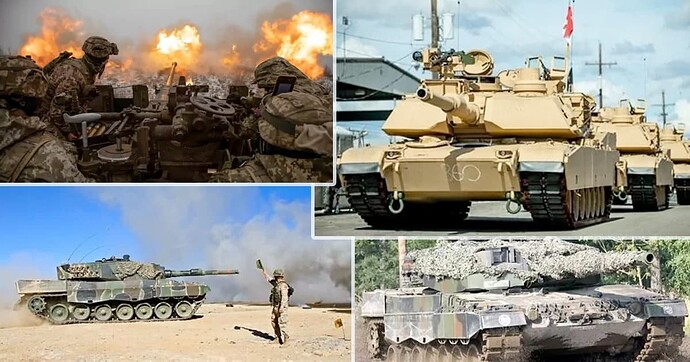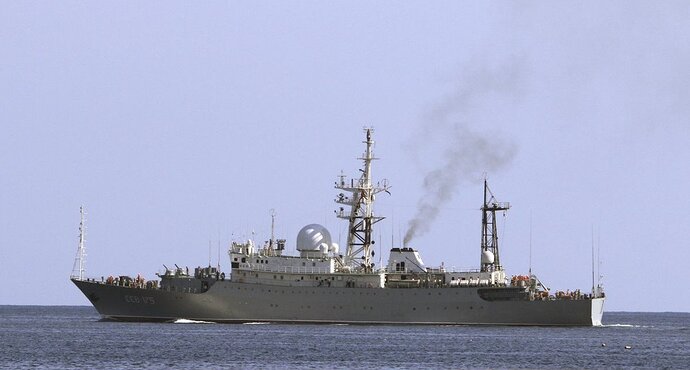Prophecy unfolding,
China and Russia dominating the hypersonic arms race; and it’s not even close
Please read and share this article on Gibraltar Messenger. Thank you.
Capable Of ‘Tracking’ F-35 Stealth Fighters, Iran’s Own S-400 System, Bavar-373, To Be Deployed In Syria
Iran is spending millions of dollars to deploy its domestic equivalent of the S-400, the Bavar-373 air defense system in Syria, to protect its assets from Israeli air strikes, according to the latest reports.
The Sayyad-4B missile, assessed to have a range between 250-300 kilometers, combined with the Bavar-373 AD platform, can reportedly track and engage Israel’s US-origin F-35 stealth fighters.
Israel uses the specially designed ‘I’ version of the F-35 and has rechristened it as Adir.
Odd Syrian Situation
Israel has often hit Iranian targets in Syria, which it says poses a threat to Israeli security as its militias in the war-torn country support President Basher al-Assad, an Israeli rival.
Iran and Russia are Syrian allies that backed Assad in the civil war that erupted in 2011. Many rebel groups in the umbrella Free Syrian Army (FSA) were linked to Al-Qaeda and AQ-affiliates Al-Nusra Front and Jabhat al-Nusra.
The US, Israel, and Turkey supported the protestors, with Iran using its Shia militias to protect its and Assad’s interests. These militias are accused of having links with the Lebanese Hezbollah, which Israel fears can launch a joint strike against it and periodically conducts aerial bombing raids against them inside Syria.
Interestingly, these strikes are conducted with tacit Russian approval as a part of a deconfliction mechanism with Israel, allowing both countries to exercise their security interests, which ironically doesn’t impact Russia-Iran relations.
Tehran understands Russia has to maintain its ties with Israel and doesn’t perceive it as Moscow giving it up for Jerusalem. On the contrary, Russian air defense systems like the Tor and Buk in Syria often shoot down incoming Israeli air-to-ground missiles and wield their capability to track Israeli aircraft every time Israel escalates against Iran and has it cornered.
Israel last conducted strikes on Damascus in March 2022, Tartus in July 2022, and two strikes in Homs in November and December 2022.
But with the war in Ukraine entering another year and possibly wanting to relieve some load off Russian military platforms that might have to be taken to Europe and the hardline Benjamin Netanyahu returning as Israel’s Prime Minister, Iran presumably wants to strengthen its defenses inside Syria.
Iran Wants To Take On Israeli Strikes In Syria
Reports quoted Iran shifting its strategy to “promote the deployment of aerial defense capabilities on its behalf in Syria at the cost of tens of millions of dollars to deal with the Israeli airstrikes.”
These defense capabilities will also have an option for “independent Iran operation” of the air defense systems, apart from its collaborative nature with the Syrian Arab Army (SAA).
Iran believes the Israeli air strikes often risk Syrian military personnel, which would cause diplomatic complications, and therefore prefers the control of its air defense system by its personnel in the long term.
F-35s Versus Iranian And Russian Radars
Iranian officials have long boasted that the Bavar-373 is comparable to the Russian S-400 and the American Patriot and Terminal High-Altitude Air Defense (THAAD) missile systems.
In November, an upgraded Bavar-373 version reported a detection range of 450 kilometers and a tracking range of 400 kilometers.
Iran’s Tasnim news agency quoted the Islamic Republic of Iran Air Defense Force (IRIADF) Brigadier General Alireza Sabahifard, who said the missile’s maximum altitude had been increased from 27 to 32 kilometers and a target drone was destroyed at the height of 40,000 feet.
Israeli F-35 fighters were last reported to have crossed into Iranian air space in 2021, according to a report in Saudi news outlet Elaph in August 2022.
Israel was preparing with the United States to strike Iran if the talks on the Iran nuclear deal failed. These were part of massive Israeli exercises in the Red and Mediterranean Seas to prepare for a war with Iran and work out ways to penetrate its air and coastal defenses.
That Iran did not protest the Israeli F-35 overflights means it failed to detect them, and the stealth aircraft did, at the time, manage to evade powerful Russian and Iranian radars.
Before that, in June, however, Russian media claimed that its powerful Electronic Warfare (EW) systems disrupted Israeli F-35s’ targeting systems that failed to strike ground targets during a military demonstration before the country’s top leadership, which included then Prime Minister Naftali Bennett.
Iran To Station Warships in Panama Canal
Iran entering Pacific Ocean for first time.
Iran's navy is set to station warships for the first time in the Panama Canal, a critical trade route in America's backyard that has never before seen an Iranian military presence.
Rear Admiral Shahram Irani, the commander of Iran's navy, said on Wednesday that his forces will establish a presence in the Panama Canal later this year, marking the first time Iran's military has entered the Pacific Ocean.
Iran in recent years has placed a greater focus on moving its military into Latin American territories as it strengthens relations with anti-American dictators in the region, most notably in Venezuela. Iranian vessels have docked more frequently in Venezuela as Tehran's hardline regime seeks to prop up dictator Nicolás Maduro. These moves are meant to provoke the United States and signal that Tehran has the ability to station its military apparatus a stone's throw from U.S. territory.
Joseph Humire, a national security analyst who focuses on Latin American issues as executive director of the Center for a Secure Free Society think tank, said Iran has been laying the groundwork for this type of voyage by holding joint exercises with allies such as Russia and China, two nations that have also been strengthening their ties with Latin American countries.
"This is what Iran has been building in Latin America for the past 30 or 40 years" by establishing embassies and bilateral agreements with a host of nations, Humire said.
Iran's goal "has always been to have a military presence in Latin America, so it's not surprising at all for its navy to announce it's going to make moves on the Panama Canal," Humire said, noting that in addition to Venezuela and Nicaragua, Iran has opened relations with Colombia.
"This is a tremendous escalation if it is to happen," Humire said. "Many people may discount Iran in terms of its capabilities … but I would not discount it because they have been building to this for a very long time."
Iranian rear admiral Irani said the navy presence in the Panama Canal is meant to "strengthen our maritime presence in international waters," according to comments published by Iran's state-controlled media.
"Today we can say that there is no scientific barrier to grow in that field," Irani said, adding that the Iranian naval forces are sailing in the Pacific Ocean for the first time.
It is likely Iran sees its presence in Latin America as a means to bolster and protect its interests in countries like Venezuela, where Iran has been helping Maduro repair his country's dilapidated oil refineries. The two rogue regimes signed a 20-year cooperation plan in June 2022, when hardline Iranian president Ebrahim Raisi was in the country for meetings with Maduro.
Latin American dictatorships have also served as a hub for Iran to evade U.S. sanctions and make arms deals.
Hezbollah, the Iranian-controlled terror group, also has a presence in Latin America that has been gaining ground for years. Hezbollah militants are known to travel freely in Venezuela and across the relatively lawless Tri-Border Area that includes Brazil, Paraguay, and Argentina.
Video was pulled because of too many lies mixed with the news.
Thank-you.
4 Submarines, 12 Warships, Hypersonic Missiles & Nuke Bombers: Russian Military Set For Massive Boost In 2023
As more military assistance is pledged to Ukraine by its allies in the West, the Russian military’s top brass has announced plans to significantly bolster its military in 2023 by inducting top-of-the-line military hardware.
When intense combat unfolds in the east of Ukraine, Russian Defense Minister Sergei Shoigu vowed on January 10 to expand the country’s weaponry and advance aviation technology and increase drone production.
Earlier this month, President Vladimir Putin ordered Shoigu to create a report on how military units are supplied, including details of weapons and equipment delivered to the military and suggestions for enhancing the defense ministry’s operations.
The order was given in the wake of some significant losses incurred by the Russian military on the battlefield.
It had become imperative for Russia to bolster its military preparedness when NATO countries were pledging robust weapon systems to Ukraine in the recent military packages. The NATO military aid that started in February 2022 when Ukraine was invaded will soon equal Russia’s 2022 defense budget.
Against that backdrop, Putin made a high-voltage pitch to his country’s defense industry on his visit to Tula, a center for arms manufacturing.
He said, “The most important task of our military-industrial complex is to provide our units and frontline forces with everything they need: weapons, equipment, ammunition, and gear in the necessary quantities and of the right quality in the shortest possible timeframes.”
Russian Military In 2023 Bolstering Hypersonic Capability
The Russian state news agency published an exhaustive list of advanced weapon systems that will be inducted into the military in 2023 based on official announcements from the Defense Ministry.
The list includes equipment for all three services of the military as well as Russia’s nuclear-capable strategic force.
In what could prove to be a year of hypersonic, the Russian Ministry of Defense (MoD) has vowed to increase the supplies of Kinzhal and Tsirkon high-precision hypersonic missile systems and continue working on other “promising samples.”
This may hardly be surprising for Ukraine or Russian adversaries in the West since Russia has already used the Kinzhal (or Dagger) hypersonic missile on the battlefield last year.
Besides, several MiG-31K fighter jets equipped with the hypersonic missile have been spotted flying in and out of Belarus in the previous few months.
As far as the Tsirkon (or Zircon) hypersonic missile is concerned, the Russian Defense Ministry recently integrated the missile on the frigate Admiral Gorshkov and flagged the vessel for a voyage into the Atlantic Ocean.
Western military experts and policymakers have primarily read the move as a subtle Russian attempt at power projection using hypersonic weapons.
The Russian Navy is set to get a massive shot in the arm as about four submarines and twelve surface vessels will be inducted this year. In addition, Russia would set up five marine infantry divisions in the Navy’s coastal defense forces based on existing brigades.
In late December, the Navy Commander-in-Chief Admiral Nikolay Yevmenov laid down the plans and announced: “In 2023, the Navy will face large-scale and important tasks that include the priority goals of accepting the strategic cruiser Emperor Alexander III with ballistic missiles, four submarines, and twelve surface ships and support vessels into the Navy.”
Out of these, the nuclear-capable Emperor Alexander III of the Borei-A class is the most significant as intended to represent the backbone of Russia’s seaborne strategic nuclear capabilities.
Their primary armament consists of 16 Bulava intercontinental ballistic missiles. The Borei-A submarines have superior acoustic stealth, maneuvering, deep-sea running, and armament control systems.
Reinforcing The Nuclear Triad
The nuclear submarine is also part of the nuclear triad that Russia has pledged to reinforce in 2023. “We will continue to develop the nuclear triad and maintain its combat readiness because the nuclear shield remains the main guarantee of our country’s sovereignty and territorial integrity,” Shoigu stressed.
The Defense Ministry announced that the Russian army would receive about 22 launchers containing Yars, Avangard, and Sarmat intercontinental ballistic missiles, three Tu-160 strategic missile carriers, and Emperor Alexander III nuclear submarine of the Borei-A project in 2023.
In November 2022, the RS-28 Sarmat Intercontinental Ballistic Missile (ICBM) entered serial production following a successful test. The RS-28 Sarmat missile is planned to boost the Russian military’s combat capability over the next 40 to 50 years and become the primary means of nuclear deterrence.
In a separate development in December**,** the Russian Defense Ministry released a video showing the installation of a Yars intercontinental ballistic missile (ICBM) into a missile silo.
Similarly, the Russian Defense Ministry also released a video showing how its Avangard Hypersonic Missile is loaded into the silo. Forty people loaded the complex strategic missile into the silo launcher.
It was previously reported that the share of advanced equipment provided to the county’s strategic nuclear forces had reached 91.3%. The entry of upgraded Tu-160M nuclear missile carriers will further bolster this. The bomber prototype recently completed its second test flight and will now undergo trials with the Defense Ministry.
This development comes a year after the Tu-160M took its first flight in January 2022. The Tu-160M is an upgraded variant of the Tu-160 bomber. According to Russian media, the Tu-160M is currently the biggest military supersonic aircraft, and the program to induct the bomber aircraft is expected to last till 2027.
The list collated and published by TASS on a Telegram channel went viral, and the Ukrainian media quickly dismissed it as Russian propaganda.
9:05min
Scott Ritter: We Are On The CUSP Of Thermonuclear War
Please watch and share this post/video on Gibraltar Messenger. Thank you.
South African Navy Set To Welcome China And Russia
South Africa will next month go ahead with naval exercises off its eastern coast with Russian and Chinese warships in a decision that could further strain its relationship with some of its biggest trading partners.
Operation Mosi, which means smoke, will take place from Feb. 17 to Feb. 26. South Africa’s reluctance to condemn Russia’s invasion of Ukraine and its decision to allow sanctioned Russian vessels to dock at its ports have already ramped up tensions with the US, UK and European Union who are backing Ukraine in the conflict. The country’s biggest opposition party questioned the wisdom of going ahead with the exercises.
“This gives the impression of not being neutral but being biased to one side. Clearly it can alienate us from other important trade partners, the west,” said Kobus Marais, the shadow defense minister for the Democratic Alliance. “This is in the best interests of Russia,” Marais said, calling it “another bad judgment, an embarrassment.”
While the exercise follows a similar event in 2019, it comes about a year after Russia invaded Ukraine, an event that brought into the open South Africa’s close ties with Russia due to historical support for the African country’s liberation struggle and their joint membership of the BRICS group of nations.
The US, Germany, Japan and the UK are leading trading partners for South Africa, while Russia isn’t in the top 15. Spokespeople from South Africa’s defense ministry and navy didn’t answer calls made to their phones or immediately reply to emails.
How Russia and Türkiye have managed to keep friendly ties despite conflicts and contradictions
Five years ago, Türkiye’s Operation Olive Branch started off with massive airstrikes, columns of armored vehicles, tanks with infantry support, and special forces clearing up Syrian territories. The Turkish military entered a region where Russian troops had been stationed just a day earlier. The incident severely strained relations between Moscow and Ankara.
Despite this, Russia and Türkiye didn’t break off ties. Amidst conflicts in Syria, the Caucasus, and Ukraine, both sides resorted to compromise and continued holding a constructive, mutually beneficial dialogue. In this article, Russian turkologists explore how Moscow’s former enemy and one of NATO’s oldest member states became one of Russia’s most stable partners.
[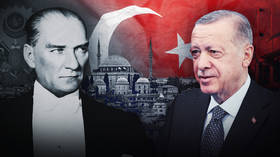
Syrian conflicts
The Turkish army began Operation Olive Branch on January 20, 2018, as a response to the shelling of border territories from the Syrian side. The operation took place in Afrin, the north-western region of Syria inhabited mainly by Kurds. It was directed against detachments of Kurdish People's Defense Forces and the Democratic Union Party founded by the Kurds.
By doing so, Türkiye affected the interests of the Russian Armed Forces officially stationed in Syria at the request of the Syrian government. A year before the start of Operation Olive Branch, Russia introduced into Afrin a group from the Center for Reconciliation of Opposing Sides and the presence of the Russian military became a sort of security guarantee for the Kurds. At the start of the operation, for security reasons, the Russian armed forces were transferred to the southeastern part of the province – particularly, to the Tell Rifaat area on the road to Aleppo.
The Kurds assumed that Russia had given the green light for the attack. Ankara’s operation began with the massive bombing of Afrin. Although the S-400 missile defense systems located at the Russian Khmeimim Air Base could have prevented this, Russia clearly had no intention of using them against Türkiye. “It is difficult to imagine a conflict between Russia and Türkiye, which is part of NATO. Should Russia have shot down Turkish planes? That’s just not possible,” said military expert Vladimir Evseev at the international media group Rossiya Segodnya round table.
Following the conclusion of Operation Olive Branch, President Recep Tayyip Erdogan said that Türkiye would continue conducting military operations throughout “a large part of north Syria.” What this practically meant was that the Syrian issue would jeopardize Russian-Turkish relations on more than one occasion.
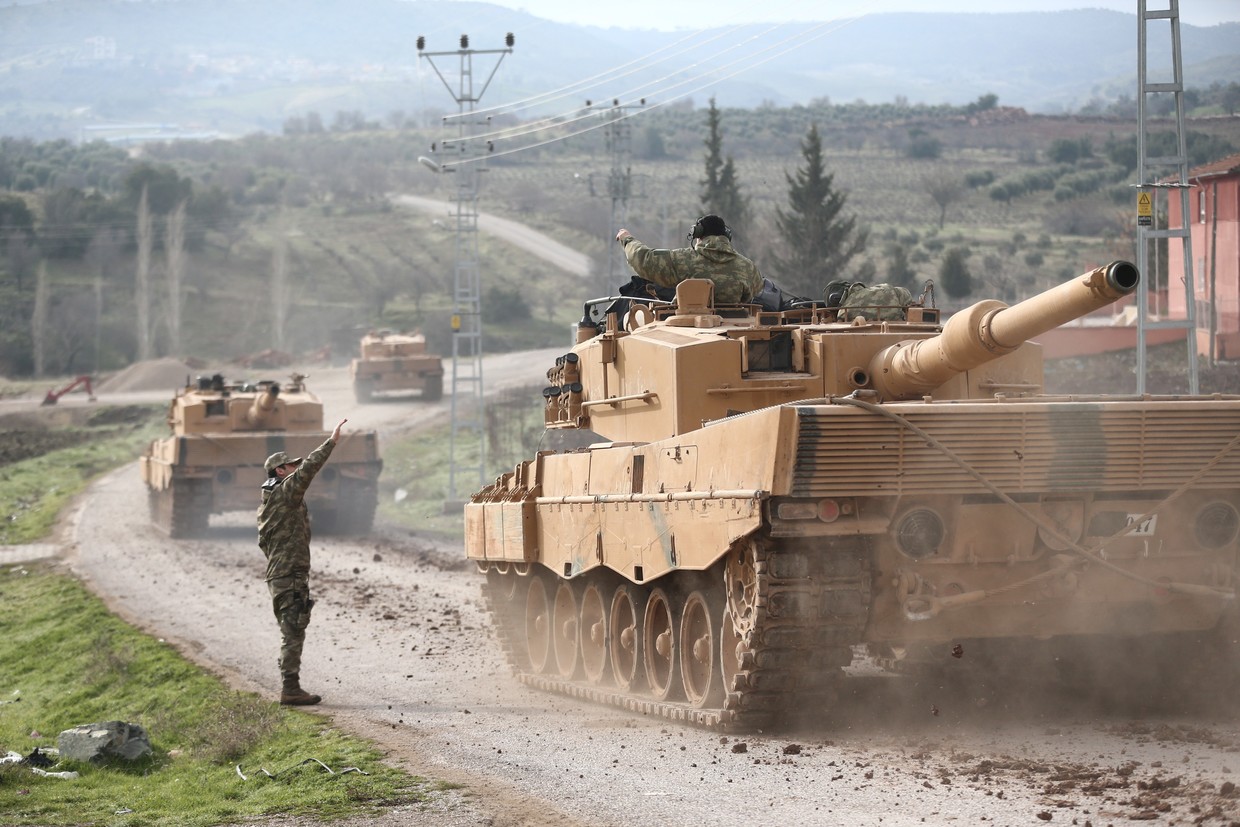
Tanks are being transported to Kilis, Turkey as part of the 'Operation Olive Branch' on January 21, 2018. © Ensar Ozdemir / Anadolu Agency / Getty Images
One of the critical moments came in January 2020 when, backed by the Turkish army, the militants tried to break through the positions of the Syrian government army. The attack was repulsed by Syrian President Bashar al-Assad’s troops with the help of Russian Aerospace Forces. This critically strained the relations between Russia and Türkiye. World politicians were alarmed by the situation and the likelihood of a real military conflict between the two external powers. However, negotiations between Russian President Vladimir Putin and Erdogan eventually put an end to the tensions.
[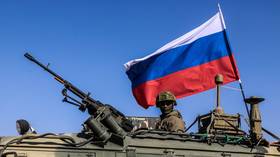
The Caucasian issue
Contradictions between Moscow and Ankara aren’t limited to Syria. A painful issue for both sides has recently sprung up in the Caucasus where, for several decades, Armenia and Azerbaijan have been engaged in an armed dispute over Nagorno-Karabakh. The Turkish leadership has openly supported the Azerbaijani side, while Russia is trying to preserve peace in the region through mediation and diplomatic negotiations.
Yet, even in such circumstances, there’s space for dialogue between Moscow and Ankara. A striking example is the work of the joint Russian-Turkish Monitoring Center, which has been monitoring the ceasefire regime in Nagorno-Karabakh following the end of the 44-day war in 2020.
The Center isn’t always successful at preventing tensions. For example, the conflict flared up once again in March 2022, when, according to Yerevan, villages on the territory of Karabakh were fired at by the Azerbaijani military.
However, the situation in the region is so fragile that it can be aggravated without a single shot. In mid-December, an Azerbaijani group that called themselves environmental activists blocked the Lachin corridor, which is under the control of Russian peacekeepers. The protesters stated that they oppose the illegal extraction of natural resources by the Armenian authorities on the territory of the unrecognized republic and require Azerbaijani officials to inspect the local mines.
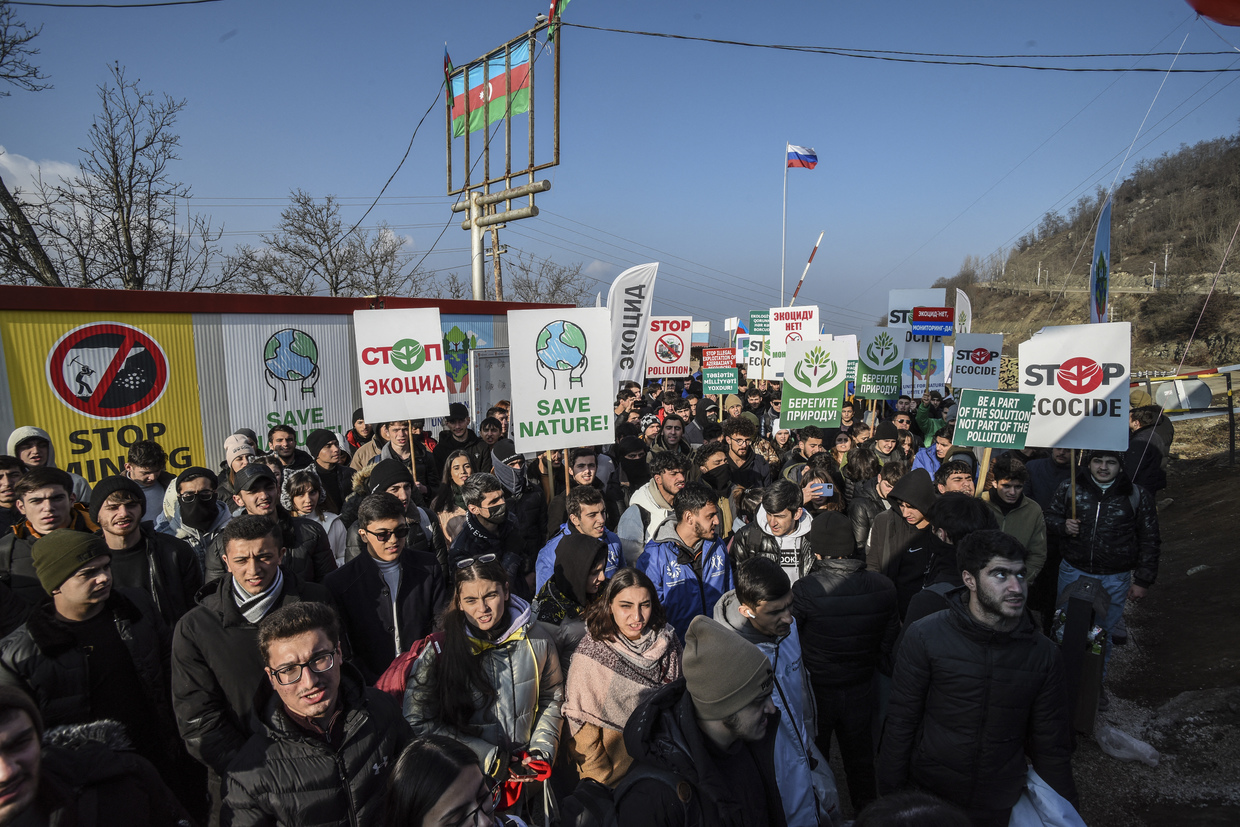
Azerbaijani environmental activists protest what they claim is illegal mining at the Lachin corridor, the Armenian-populated breakaway Nagorno-Karabakh region's only land link with Armenia, on December 26, 2022. © TOFIK BABAYEV / AFP
The corridor blocked by the activists is the only road connecting Nagorno-Karabakh with Armenia, which de facto places the unrecognized republic under blockade.
Vladimir Putin and Recep Erdogan haven’t yet discussed the issue. Their last discussion on the topic of Nagorno-Karabakh took place on November 1, 2022. The Russian president then informed his Turkish counterpart about the results of his trilateral meeting with Azerbaijani President Ilham Aliyev and Armenian Prime Minister Nikol Pashinyan.
However, the leaders of Russia and Türkiye maintain regular contact on another conflict, which for Moscow is currently the most pressing issue.
[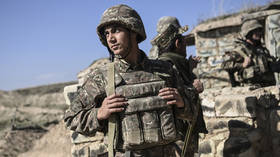
The Ukrainian crisis
This, of course, is the conflict in Ukraine. The President of Türkiye is almost the only mediator in the conflict, at least in the matter of prisoner exchanges between Russia and Ukraine, which take place with the direct participation of Ankara.
It’s worth noting that Erdogan asked Putin to assign Ankara the status of an official mediator in the Ukrainian crisis even before the start of the Russian military operation.
“We support the establishment of peace in the region, especially in the matter regarding the Crimean Turks. We have repeatedly discussed these issues with our Russian friends and especially with President Putin. We don’t want the region to be a territory dominated by war,” the President of Türkiye said at the end of last year.
However, Moscow hardly sees Ankara as a mediator after its participation in the anti-Russian “Crimea Platform” summit organized by Kiev and the supply of military drones to Ukraine – actions that clearly deprived it of neutrality.
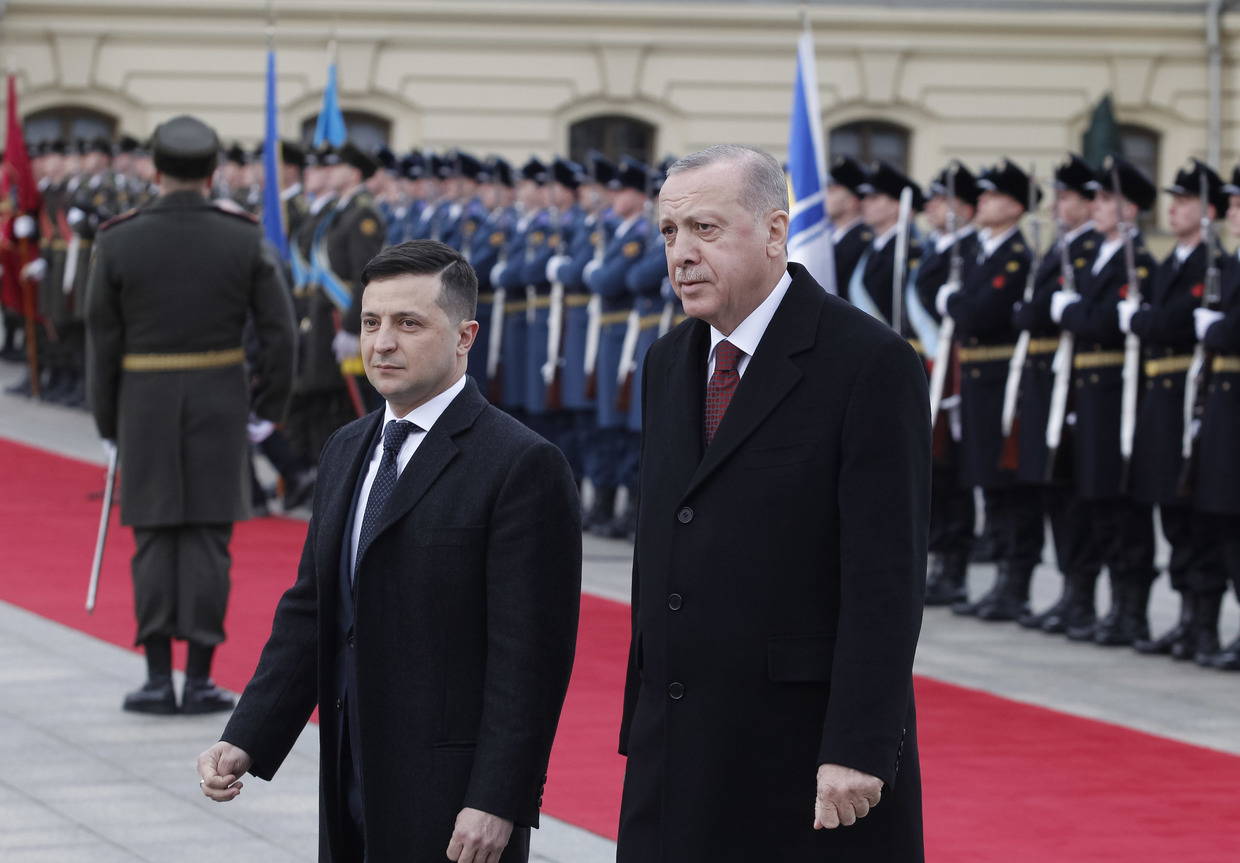
Ukrainian President Vladimir Zelensky and Turkish President Recep Tayyip Erdogan © STR / NurPhoto via Getty Images
A solid relationship
Despite the many contradictions between Russia and Türkiye, the two countries have managed to maintain a constructive dialogue and friendly relations. One of the major factors is the economic interdependence of Moscow and Ankara, which has grown rapidly over the past few years. Between January-September of last year, the trade turnover between Russia and Türkiye topped $47 billion, which is twice as much as in the first nine months of 2021. This is mainly down to Moscow using Ankara to replace official imports from Western states.
[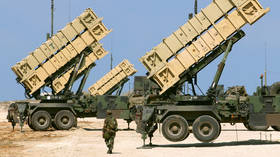
“The dialogue between Russia and Türkiye is based on an extremely high level of cooperation in trade and economics. This is a key aspect. Türkiye has set a record in export this year, and a significant amount of goods has been exported to Russia. Lacking this, the Turkish economy would be in a much more unfortunate state than it is now,” Viktor Nadein-Rayevsky, senior researcher at The Institute of World Economy and International Relations, told RT.
Moreover, Türkiye is dependent on Russian energy resources. Despite the Anadolu News Agency reporting that Ankara started substituting Russian gas and turning to other suppliers (as per the monthly report of the Energy Market Regulation Authority), the Russian Federation still retained a leading position in this field.
Nadein-Rayevsky also considers Russia’s construction of the Akkuyu nuclear power plant in Türkiye an important factor in the relations between the two countries. The plant is being built on the southern coast, in the Mersin Province. This is the first nuclear power plant built in the republic, and the first project in the global nuclear industry implemented according to the ‘build-own-operate’ model. The corresponding agreement between Russia and Türkiye was signed in May 2010. Project costs are estimated at about $20 billion.
“The construction costs are covered by Russia, without the investment of Turkish capital. The debt will be paid off through the supply of electricity, paid by Turkish consumers at pre-agreed prices. This model is quite profitable for Russia. We are turning Türkiye into a gas hub which will supply Europe with gas. This is a great opportunity for Türkiye, since as a distributor of resources, it will have a word in determining prices. And the Turks definitely won’t sell themselves short,” the expert said.
In addition to economic cooperation, Russia and Türkiye managed to build trusting relations and constructive dialogue thanks to mutual respect, says Amur Gajiyev, a member of the Institute of Oriental Studies of the Russian Academy of Sciences.
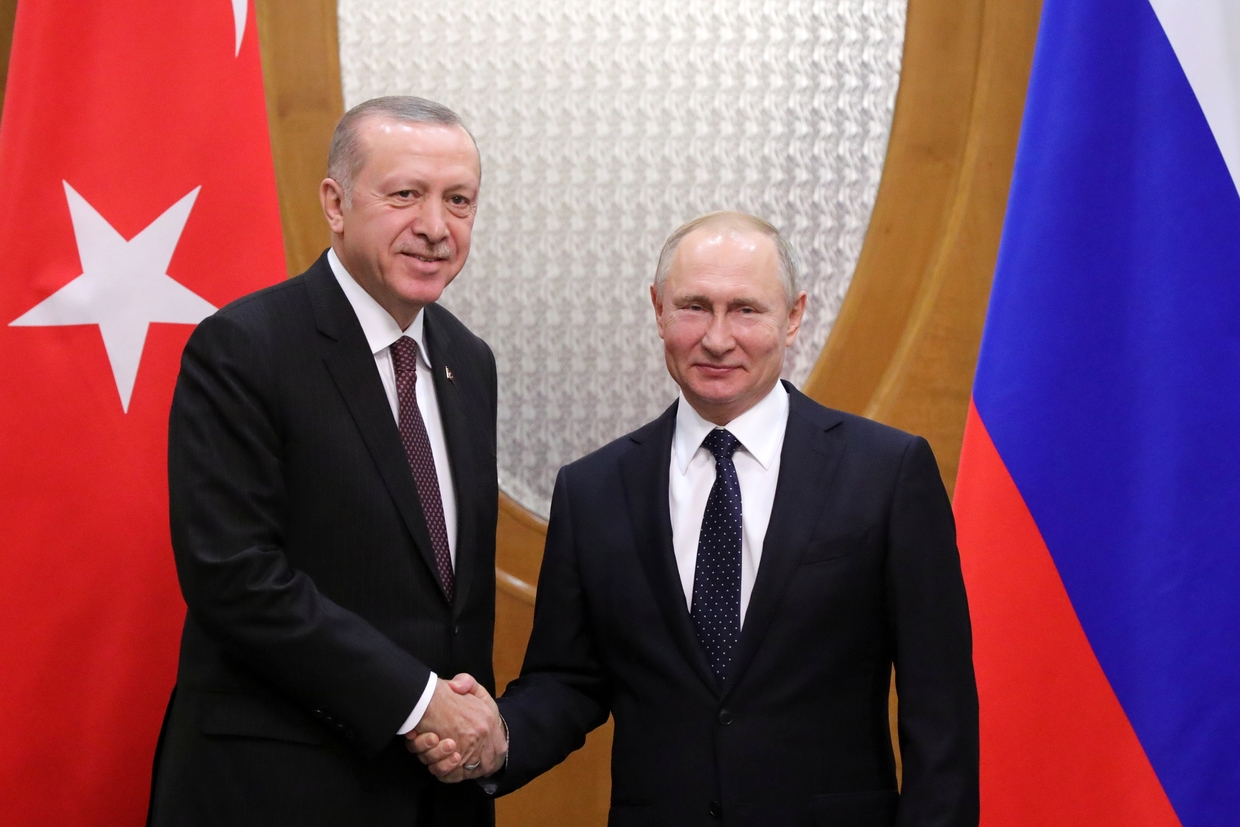
Western Escalation Threatens To Widen WW3; Russia Continues to Prepare
Please read and share this article on Gibraltar Messenger. Thank you.
Medvedev Predicts Alliance Against The West
Please read and share this article on Gibraltar Messenger. Thank you.
The Endgame or Escalation of The War?
Please share this video-post on Gibraltar Messenger. Thank you.
The West vs Russia – from a hybrid war to real one
Please share this article on Gibraltar Messenger. Thank you.
A Russian spy ship is hanging out off the coast of Hawaii to collect intel on the U.S. military’s ballistic missile defense system
A Russian spy ship, the Kareliya, has crossed the Pacific to loiter off the coast of Hawaii. The ship is reportedly off the coast of the garden island of Kauai. Kauai is the site of ballistic missile defense tests, and Kareliya’s presence may indicate an imminent test.
A Russian Navy spy ship is thousands of miles from home and in America’s backyard. The Kareliya, a signals collection ship, has sailed from its frozen home port in the Russian Far East all the way to sunny Hawaii. The ship, reportedly sailing off the coast of Kauai, may be attempting to gather information from an upcoming U.S. missile defense test.
The U.S. Coast Guard announced last week it was tracking the ship, Kareliya, off the coast of the Hawaiian island chain. (The photo at the top is of her sister ship, Viktor Leonov, near Havana, Cuba, in 2017.) “The U.S. Coast Guard is currently monitoring the Russian vessel operating in the vicinity of Hawaii,” said Cmdr. Dave Milne, chief of the Coast Guard’s external affairs. “As part of our daily operations, we track all vessels in the Pacific area through surface and air assets and joint agency capabilities.”
The Coast Guard released a recording of the ship, seen below. The first ship in the video is actually the tanker Pechenga, which is supplying the spy ship. Kareliya appears at the two-second mark, when her bow and AK-630 Gatling guns are visible. The latter half of the video is of the rear of Kareliya, with particular attention paid to her antennas.

Coast Guard partners tracking Russian vessel off Hawaiian Coast
Kareliya is a Vishnya or Meridian class SIGINT intelligence collection vessel. Built in Gdansk, Poland, in 1986, Kareliya is assigned to the Russian Pacific Fleet, headquartered at Vladivostok. The ship is 309 feet long, has a crew of 151, and displaces 3,100 tons. It is equipped with several electronic arrays designed to intercept communications traffic and other electronic signals. It is also fairly heavily armed with defensive weapons for a spy ship, with two AK-630 close-in weapon system Gatling guns and two SA-N-8 surface-to-air missile launchers.
The Russian ship was reported on January 19 operating 100 miles off Kauai. That’s within the U.S. exclusive economic zone but not within territorial waters, so the ship is free to operate there.
Kauai is one of the westernmost Hawaiian islands and home to Pacific Missile Range Facility Barking Sands, on the western side of the island. Barking Sands is where the U.S. military tests ballistic missile interceptors, including the Army’s Terminal High Altitude Air Defense and the Navy’s SM-3 and SM-6 air defense missiles. Russia has repeatedly warned that it considers U.S. missile defense efforts a danger to Russian security, as they could theoretically be scaled up to help blunt a Russian retaliatory strike. There is no evidence the Pentagon is interested in doing so, however.
In 2021, Kareliya was sighted just 13 miles off the coast of Kauai, or one mile outside U.S. territorial waters. Shortly afterward, Barking Sands conducted Flight Test Aegis Weapon System 31 Event 1—a test designed to shoot down a simulated medium-range ballistic missile with two SM-6 air defense missiles. The SM-6s failed to intercept their target.
Could Kareliya be parked off Hawaii in anticipation of a new American missile test? The tests aren’t typically announced in advance, though the Russians somehow have a knack for having a ship in place to collect data ahead of time. How Moscow knows is just one of the mysteries of the Russian-American relationship.
